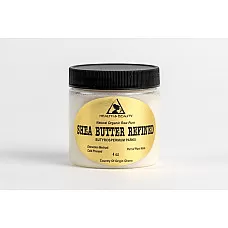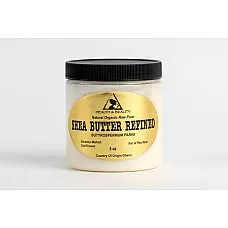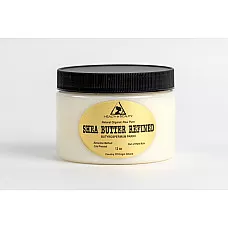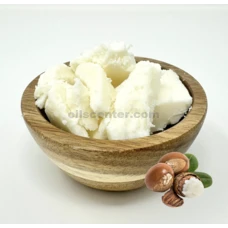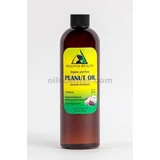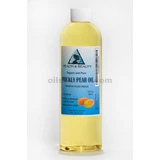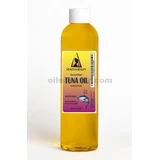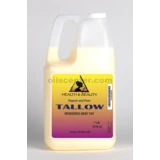$0.00
Checkout
Application Experience in History
Shea butter, or as it is also called shea butter, is one of the most valuable base oils for skin. Its unique natural emollient and protective properties are proven by the centuries-old experience of using this oil by the peoples of Africa, whose representatives have surprisingly smooth, elastic skin and an extremely low percentage of skin diseases.
For example, they use shea butter to massage newborns, protecting their skin from exposure to hot climates. Since 1940, after the first research, shea butter is considered the most valuable cosmetic supplement.
A Shi tree or "Tree of Life" grows in East, West and Central Africa. Trees grow in the wild for up to 300 years, and the first fruits can appear even after 20-25 years, which significantly increases the cost of oil. In much of West Africa, the destruction of the Shi tree is prohibited by law.
How to get shea butter?
Shea butter is extracted from the fruit of the tree, which in appearance resembles the small fruits of avocado. Inside it is a bone, from the pulp of which this valuable oil is extracted. The process of obtaining oil in a traditional way takes a lot of time, in contrast to the industrial method using hexane. However, only the traditional way of obtaining Shea butter is able to preserve all the wealth that nature has awarded this unique fruit. It consists of the following important steps:
- Separation of the pulp of the fruit from the nut. Traditionally, African women do this work with a rolling pin. The resulting nuts are washed and dried.
- Walnut crushing. In this traditional process, mortars are used in which the nuts are ground by hand.
- Roasting. Chopped nuts in an open area are fried in huge pots, constantly mixing with wooden spatulas, avoiding their burning
- Grinding. The roasted nuts are crushed to a smooth paste. After that, water is added to the paste so that it can be mixed manually.
- Separation of oils. The resulting paste is added to the hot water tank. Maintaining the temperature and constantly stirring, the separation of water and oil occurs. Oil floats to the surface.
- Collection and formation. Pour oil in various forms and put in a cool place.
The smell of oil Sheer nutty, light and almost elusive, sometimes closer to a walnut with a hint of coconut. Unrefined oil, unlike refined oil (additionally refined), contains much more indispensable and useful natural substances.
Properties of Shea Butter
The wonderful properties of coconut oil are manifested due to the following natural substances:
- Oleic acid (up to 55%). Strengthens the barrier function of the skin, retaining moisture in it, preventing the formation of fats and somewhat contributing to their "burning".
- Stearic acid (up to 45%). Normalizes the protective properties of the skin.
- Linoleic acid (up to 8%). Strengthens the intercellular bonds and membrane structures, as a result of which - moisture in the skin is retained more effectively.
- Palmitic acid (up to 3%). Provides restoration of the intercellular substance of skin cells.
- Myristic acid (up to 1%). Used by the body to stabilize the necessary proteins in the skin.
Shea butter is the only base oil that almost 80% consists of triglycerides. Oil is also an active source of vitamins E, F and A.
When applied to the skin, this base oil is perfectly distributed, evenly and finely smeared, absorbed no worse than liquid base oils into the skin and at the same time leaves no visible greasy marks. A minute after use, the skin becomes smooth and silky.
Skin Benefits
In cosmetology, the main properties of Shea butter are considered emollient, but the excellent characteristics of this rare African base oil are not limited to them.
Due to the high content of unsaponifiable fats, Karite has unique regenerative characteristics - it activates deep regeneration processes, starts the synthesis of natural collagen, restores skin color and provides reliable protection against ultraviolet rays.
Moisturizing, softening and anti-aging properties of Shea butter are excellent for preventing thinning of the skin, to combat fine wrinkles and age-related changes.
Shea butter must be used for daily or special skin care of absolutely any type, including damaged, problematic, dry skin. Thanks to its unique emollient qualities, it is also excellent for caring for baby’s delicate skin.
Healing properties
This unique oil manifests itself as an ideal anti-inflammatory base for injuries of ligaments and muscles or diseases of the joints, as well as the best oil with decongestant properties. Used in dermatology for the treatment of: dermatosis, eczema and psoriasis.
In addition, Karite oil has a healing effect on burns, scars, wounds, stretch marks, stimulates capillary blood circulation, is able to protect both from excessive solar activity, and from chapping and frostbite, and promotes the healing of umbilical cord tissue after circumcision.
Hair Benefits
Shea butter is a real find for hair care. It can be used both independently and as part of different masks, or adding to purchased cosmetics.
Oil will cope with a number of problems:
- Soothes irritated scalp. Eliminates itching of the scalp and tightness, has a good anti-inflammatory effect. It is quickly absorbed into the skin without clogging the pores.
- Provides hair nutrition. Shea butter perfectly moisturizes and nourishes the hair along the entire length, which is especially useful for curls that undergo constant dyeing or thermal exposure. Improves split ends, making them more lively and tidy.
- Protects hair from ultraviolet radiation. Shea butter has the ability to protect hair from the UV rays of the sun.
- Softens and smoothes strands. Being a natural conditioner, Shea butter envelops the trunk of each hair, making the strands obedient, soft and greatly facilitating combing.
- Has a healing effect. Shea butter has been used successfully for scalp problems such as psoriasis, eczema and dermatitis.
-
👍 New items in Shea Butter Refined 2025
-
💯 Bestsellers in the Shea Butter Refined 2025
-
💵 Cheapest Shea Butter Refined 2025
-
💰 Most expensive Shea Butter Refined 2025
-
✅ Most popular products in the Shea Butter Refined 2025
-
💵 Price range: from to Shea Butter Refined 2025
-
What is Shea Butter Refined?
-
How does Refined Shea Butter differ from raw Shea Butter?
-
Can Shea Butter Refined be used for sensitive skin?
-
Is Refined Shea Butter still effective for moisturizing?
-
Can Refined Shea Butter be used in DIY skincare products?


